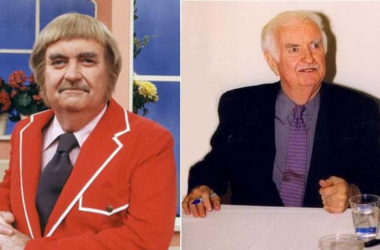In 2007, the web saw the emergence of a number of innovative platforms that aimed to change the way users interacted with content and digital media. One of the lesser-known yet intriguing platforms that emerged during this time was GetYarn, often stylized as “Yarn.” At the height of its popularity, it stood out for its ability to allow users to search, share, and create content centered around short video and audio clips from movies, TV shows, and other forms of popular media. This article delves into the story of what happened to GetYarn in 2007, its rise to prominence, and the technological and cultural context that both helped and hindered its growth.
The Digital Landscape in 2007
The mid-2000s was an era of rapid technological advancement and shifting consumer behaviors. The internet was increasingly becoming a central aspect of daily life, with broadband speeds improving and a growing number of people accessing content online. Social media platforms such as MySpace and Facebook were gaining momentum, while YouTube, which had launched in 2005, was quickly becoming the go-to platform for video sharing. The internet was no longer just for text-based communication; it was evolving into a multimedia powerhouse.
In this context, GetYarn was created as a way to organize, access, and share short video clips, or “yarns,” often sourced from movies, TV shows, and music videos. The premise of the platform was simple: it allowed users to search for specific moments in media—like a line from a film or a snippet of a song—and share that clip with others, making it perfect for creating memes, montages, or simply sharing a favorite moment with friends. Unlike YouTube, which focused on hosting full-length videos, GetYarn’s focus was on specific fragments of media content, making it a unique offering in the online media landscape of 2007.
The Rise of GetYarn
GetYarn’s rise can be attributed to several factors. First, it tapped into the growing trend of micro-content consumption, which was fueled by platforms like Twitter (launched in 2006), where users communicated in short, 140-character messages. Similarly, GetYarn allowed people to share brief, impactful clips rather than full videos, aligning with the growing preference for bite-sized content. This model offered an efficient way to consume and share iconic moments from pop culture, all without the need to sift through entire movies or TV episodes.
Second, GetYarn benefited from the widespread rise of meme culture. As the internet became more visual and less text-driven, memes began to dominate online conversation. Users were looking for ways to create, remix, and share media that resonated with their social circles. GetYarn’s search functionality allowed users to find the exact moment in a movie or show that encapsulated the humor, emotion, or tone they wanted to convey, turning GetYarn into an indispensable tool for meme-makers.
Moreover, the platform’s ease of use and accessibility played a role in its early success. Users could search for a specific line or visual cue, and the platform would generate a corresponding video or audio snippet. These clips were easily shareable, making GetYarn a go-to tool for bloggers, social media users, and digital marketers looking for the perfect piece of content to enhance their posts.
Technological Challenges and Setbacks
Despite its early promise, GetYarn faced several hurdles that ultimately slowed its growth. One of the biggest challenges was the issue of intellectual property rights. While GetYarn offered a novel way for users to access and share media, it raised concerns over copyright infringement. Media companies were increasingly protective of their content, and sharing clips from movies, TV shows, or songs—even short ones—posed a legal gray area. As GetYarn continued to grow, it found itself under increasing scrutiny from content owners and copyright enforcement agencies.
This was a particularly difficult time for platforms like GetYarn. Around the same time, YouTube was facing its own copyright battles with media conglomerates. In 2007, Google (which had acquired YouTube the previous year) struck a licensing deal with several major media companies to mitigate these concerns. However, smaller platforms like GetYarn lacked the resources and negotiating power to secure similar agreements, making it vulnerable to legal challenges.
Another challenge GetYarn faced was the evolving nature of the internet itself. As broadband speeds continued to improve and mobile internet usage began to rise, users were no longer as constrained by the limitations of slow-loading videos. Full-length videos, like those hosted on YouTube, became more accessible to users. This shift reduced the need for platforms like GetYarn, which relied on offering short clips to bypass slow internet connections or avoid overwhelming users with large files.
Additionally, technological advancements in media editing software allowed users to easily create and share their own clips from videos without the need for a platform like GetYarn. This growing accessibility to editing tools meant that users could download a movie or TV show, edit their favorite scenes, and upload the clips to social media or video-sharing platforms without needing GetYarn’s services. As a result, the platform’s unique selling point began to lose its appeal.
The Fall of GetYarn
The combination of copyright issues, shifting user behaviors, and growing competition from other platforms eventually led to the decline of GetYarn in 2007. The company found itself unable to secure the licensing deals necessary to continue operating at scale, while simultaneously losing its user base to platforms like YouTube and social media giants like Facebook, which increasingly integrated video sharing into their ecosystems.
The final blow came in the form of legal action. As GetYarn’s popularity grew, so did the attention it received from copyright holders. In 2007, several media companies filed cease-and-desist letters, and the platform found itself unable to operate without risking significant financial and legal repercussions. The company attempted to pivot by introducing stricter content moderation policies and focusing on user-generated content, but it was too late. By the end of the year, GetYarn had ceased operations.
The Legacy of GetYarn
Though its lifespan was short-lived, GetYarn left an indelible mark on the digital landscape. Its concept of allowing users to search for and share short clips from movies and TV shows laid the groundwork for future platforms that would focus on micro-content. Today, services like Giphy, which allows users to share GIFs, and platforms like TikTok, where users share short video clips, owe much of their success to the trailblazing efforts of platforms like GetYarn.
Moreover, GetYarn’s challenges with copyright enforcement foreshadowed the ongoing struggles that modern platforms face in balancing user creativity with intellectual property protection. As media companies continue to navigate the complexities of digital content distribution, platforms like GetYarn serve as a reminder of both the opportunities and pitfalls of the online media ecosystem.
In conclusion, while GetYarn’s story is one of rapid rise and equally rapid fall, its influence can still be seen in today’s internet culture. The platform may not have survived beyond 2007, but its innovative approach to content sharing and its impact on meme culture live on in the countless platforms and tools that followed in its footsteps.







